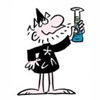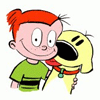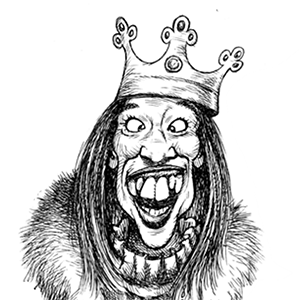Top 8 Graphic Design Trends Influencing Web Development
Published in Business Articles
The digital world moves quickly, and both graphic design and web development are constantly evolving. A website is no longer just about providing information-it’s about creating an engaging experience that draws visitors in and keeps them interested.
Graphic design plays a huge role in shaping how websites look and feel, while web development ensures that those creative ideas work smoothly across all devices. Together, they create the kind of online experiences people expect today.
In this article, we’ll explore eight major graphic design trends that are influencing web development right now. These trends not only define how websites look but also guide how they are built.
1. Minimalism with Purpose
Minimalism has been around for years, but it has become more refined and purposeful. It’s not just about removing extra elements-it’s about focusing attention on the most important parts of a website.
Designers use open space, clean lines, and simple color palettes to make sites feel calm and easy to navigate. For developers, this style often means building fast-loading pages that avoid unnecessary clutter.
A good example is a homepage with one strong image, a clear headline, and a single call-to-action button. This makes it easy for visitors to know where to click and what the brand stands for.
2. Bold Typography
Typography has shifted from being a background element to taking center stage. Big, bold fonts now carry as much weight as logos or images. They are used to grab attention and communicate brand identity instantly.
For developers, this trend means ensuring that fonts scale correctly on mobile and desktop screens. They also need to make sure text loads quickly without slowing down the site.
Typography can set the tone of an entire website. A playful, handwritten font tells visitors the brand is fun and casual, while sleek, modern typefaces suggest professionalism. This trend shows that words are not just read-they are seen as powerful design elements.
3. Vibrant Color Gradients
Flat design dominated the web for a while, but now gradients are making a big comeback. Instead of using just one shade, designers blend multiple colors to create depth and emotion.
Gradients bring energy to a website. They can be used as full-screen backgrounds, highlight buttons, or add dimension to graphics. Developers work with advanced CSS tools to make gradients look smooth across devices.
When used well, gradients guide users’ eyes and make sections of a website stand out. For example, a bright gradient button might signal the most important action on the page, such as “Sign Up” or “Buy Now.” This simple design shift makes a big impact on user behavior.
4. 3D Elements and Realism
Technology has opened the door to more lifelike visuals on the web. 3D graphics, shadows, and realistic textures are appearing more often in modern websites. These elements create depth and make digital environments feel almost tangible.
For developers, this trend means using tools like WebGL or 3D rendering libraries while keeping performance in mind. Heavy 3D files can slow down websites, so developers must balance beauty with speed.
When done well, 3D design enhances storytelling. For example, an online store might show a 3D view of a product so customers can rotate it before buying. This creates trust and helps users feel more confident about their choices.
5. Motion and Micro-Interactions
Movement in design has evolved far beyond flashy animations. Today, it’s about subtle touches that improve the user journey. Micro-interactions are small animations that respond to user actions.
Think of a button that slightly changes color when clicked or an icon that wiggles when hovered over. These small motions guide users and make websites feel alive. Developers use CSS animations and JavaScript libraries to add these effects without slowing down the site.
Motion also helps tell stories. A timeline that animates as you scroll down a page makes information more engaging. These little details keep users entertained and encourage them to stay longer on a site.
6. Dark Mode Options
Dark mode isn’t just a passing trend-it’s becoming a standard feature. It reduces eye strain, saves battery life on mobile devices, and gives websites a sleek, modern appearance.
Developers create two design versions-light and dark-and let users switch between them easily. This requires thoughtful coding to ensure every color, image, and font looks good in both modes.
Designers must also think carefully about contrast in dark mode so text remains easy to read. This trend highlights the importance of giving users control over how they experience a website.
7. Inclusive and Accessible Design
Today’s design trends are about more than style-they are about responsibility. Inclusive design ensures websites serve people of all backgrounds and abilities.
For developers, this means following accessibility guidelines such as proper alt text for images, readable font sizes, and keyboard-friendly navigation. Designers also create visuals that celebrate diversity and avoid stereotypes.
Accessibility isn’t just a trend-it’s essential. A website that is usable by everyone builds trust, improves brand reputation, and can even reach a wider audience. Businesses that adopt this trend show they value all their users equally.
8. Custom Illustrations and Hand-Drawn Elements
Stock photos are losing their shine, while unique illustrations and hand-drawn art are gaining popularity. These visuals bring personality and warmth to a brand.
Developers support these designs by making sure illustrations load properly, scale to different screen sizes, and can be animated when needed.
Custom artwork also tells a brand’s story in a way that generic images cannot. A business might use fun sketches to explain complex services or colorful drawings to make its website more inviting.
How These Trends Influence Web Development
Graphic design and web development go hand in hand. Each trend mentioned above not only changes the way websites look but also affects how they are built and maintained.
For example, bold color schemes require thoughtful coding for accessibility, while 3D graphics demand performance optimization. If you want to dive deeper into these trends and see real-world examples, you can find out more from industry experts who specialize in combining design and development.
Embrace Design to Enhance Development
Graphic design is shaping the future of web development in powerful ways. From minimalist layouts to bold typography, from colorful gradients to micro-interactions, these trends help websites look and feel modern. At the same time, accessibility and inclusivity remind us that design should always serve people first.
If you’re ready to take your website to the next level, start exploring these trends today. The right design choices can turn your online presence into something unforgettable.
For more cool reads and a ton of knowledge, make sure to visit our blog!











Comments